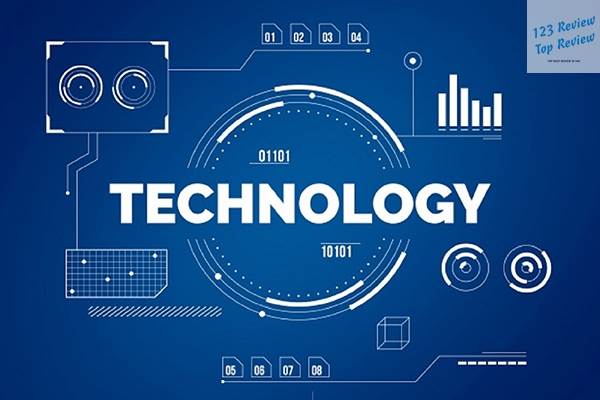Technology is a term that permeates every aspect of modern life, yet its definition is often more complex and multifaceted than it might initially appear. At its core, technology refers to the application of scientific knowledge to create tools, systems, and methods that solve problems or perform tasks. It is a broad and dynamic concept that has evolved over millennia, shaping civilizations and driving progress across all sectors of society.
The Concept of Technology
Historical Perspectives on Technology
The roots of technology trace back to the earliest human civilizations, where the need to survive and thrive in a harsh environment led to the invention of tools and techniques. The word “technology” itself is derived from the Greek words “techne,” meaning art, skill, or craft, and “logia,” meaning the study or science of something. This ancient perspective on technology emphasized human ingenuity and the application of practical knowledge.

In ancient times, technology was as simple as the development of basic tools for hunting, farming, and shelter. The invention of the wheel, the discovery of fire, and the creation of simple machines like the lever and pulley were monumental technological advancements that significantly impacted early human societies. These innovations allowed for more efficient resource use, leading to population growth, the development of communities, and the rise of civilizations.
As societies grew more complex, so did their technological needs. The Bronze Age and Iron Age marked periods of significant technological progress, with the development of metalworking techniques that enabled the creation of stronger tools and weapons. These advancements not only improved daily life but also played crucial roles in warfare, trade, and expansion.
Defining Technology in the Modern Context
In today’s world, technology encompasses far more than just physical tools. It includes the systems, methods, and processes that enable the operation of those tools, as well as the knowledge that underpins them. The modern definition of technology is broad and varied, covering everything from simple household appliances to complex information systems, medical devices, and transportation networks.
One of the key aspects of modern technology is its focus on efficiency and problem-solving. Technology is designed to make tasks easier, faster, and more effective, whether in the context of personal use, business operations, or societal functions. For example, smartphones and computers allow for instantaneous communication and access to information, revolutionizing how people work, learn, and interact with each other.
Moreover, modern technology is often characterized by its reliance on scientific principles and research. Advances in fields such as physics, chemistry, biology, and engineering have led to the development of new technologies that continue to shape the world. The rise of digital technology, in particular, has transformed industries and everyday life, leading to the Information Age, where data and information are key drivers of economic and social activities.
The Evolution of Technology Over Time
The evolution of technology is a testament to human creativity and adaptability. From the early days of simple tools to the sophisticated systems of today, technology has undergone continuous transformation, driven by innovation, necessity, and the quest for improvement.
The Industrial Revolution, which began in the late 18th century, marked a significant turning point in technological development. It introduced machinery, mass production, and new energy sources, fundamentally altering the way goods were produced and consumed. This period saw the invention of steam engines, mechanized looms, and railways, which revolutionized transportation, manufacturing, and commerce.
The 20th century witnessed further technological advancements, particularly in communication and information processing. The invention of the telephone, radio, and television brought about a new era of connectivity, allowing people to share information and ideas across vast distances. The development of computers and the internet in the latter half of the century transformed not only communication but also how businesses operated, education was delivered, and governments functioned.
Today, technology continues to evolve at an unprecedented pace. The rise of digital technologies, such as artificial intelligence (AI), blockchain, and the Internet of Things (IoT), is ushering in a new era of innovation. These technologies have the potential to transform industries, improve quality of life, and address some of the most pressing challenges facing humanity, from healthcare to climate change.
Types of Technology
Information Technology
Information Technology (IT) is one of the most prominent and rapidly growing fields of technology. IT encompasses the use of computers, software, networks, and other electronic systems to store, process, and transmit information. It is the foundation of modern business operations, enabling organizations to manage data, automate processes, and communicate efficiently.
The scope of IT is vast, covering everything from personal computing devices like smartphones and laptops to complex enterprise systems that manage data for large organizations. Key components of IT include:
- Hardware: The physical devices used to store and process information, such as computers, servers, and data storage systems.
- Software: The programs and applications that run on hardware, allowing users to perform tasks, from word processing to data analysis.
- Networking: The systems and protocols that enable communication between devices, such as the internet, local area networks (LANs), and wireless networks.
- Data Management: The methods and technologies used to store, organize, and retrieve data, including databases, cloud storage, and data analytics.
The impact of IT on society is profound, as it has transformed how people work, learn, and interact. The rise of the internet, in particular, has made information more accessible than ever before, enabling new forms of communication, entertainment, and commerce.
Medical Technology
Medical technology refers to the tools, equipment, and procedures used in healthcare to diagnose, treat, and monitor patient health. It encompasses a wide range of innovations, from simple diagnostic tools like thermometers and stethoscopes to advanced imaging systems like MRI machines and robotic surgery.
The field of medical technology is constantly evolving, driven by advances in science and engineering. Some of the key areas of medical technology include:
- Diagnostic Equipment: Tools and devices used to diagnose medical conditions, such as X-ray machines, blood tests, and genetic screening technologies.
- Treatment Devices: Equipment and procedures used to treat medical conditions, including surgical instruments, radiation therapy machines, and implantable devices like pacemakers.
- Telemedicine: The use of telecommunications technology to provide healthcare services remotely, allowing patients to receive care without the need for in-person visits.
- Wearable Technology: Devices that monitor and track health metrics, such as heart rate, blood pressure, and physical activity, enabling individuals to manage their health more effectively.
Medical technology has revolutionized healthcare, improving patient outcomes, extending life expectancy, and enhancing the quality of life for millions of people. However, it also raises ethical and societal questions, such as the cost of advanced treatments and the accessibility of healthcare.
Communication Technology
Communication technology refers to the tools and systems used to transmit information between individuals and organizations. It includes everything from traditional telephones and radios to modern digital communication platforms like social media and video conferencing.
The evolution of communication technology has been marked by several key developments:
- Telegraphy: The invention of the telegraph in the 19th century allowed for the rapid transmission of messages over long distances, laying the foundation for modern communication networks.
- Telephony: The invention of the telephone by Alexander Graham Bell in 1876 revolutionized communication by enabling real-time voice conversations between distant parties.
- Broadcasting: The advent of radio and television in the early 20th century brought mass communication to a new level, allowing information to be disseminated to large audiences simultaneously.
- Digital Communication: The rise of the internet and digital communication platforms in the late 20th century transformed how people interact, share information, and form communities.
Today, communication technology is an integral part of daily life, enabling instant messaging, video calls, social networking, and content sharing on a global scale. It has also transformed industries such as media, advertising, and education, creating new opportunities and challenges.
Transportation Technology
Transportation technology involves the development of vehicles and infrastructure that facilitate the movement of people and goods. It has played a crucial role in the growth of economies, the expansion of cities, and the globalization of trade.
Key developments in transportation technology include:
- Steam Engines: The invention of the steam engine in the 18th century powered the Industrial Revolution, leading to the development of railways and steamships that transformed trade and travel.
- Automobiles: The mass production of automobiles in the early 20th century, pioneered by companies like Ford, revolutionized personal transportation, leading to the development of highways and urban sprawl.
- Aviation: The invention of the airplane by the Wright brothers in 1903 opened up new possibilities for long-distance travel and global connectivity, leading to the development of the modern aviation industry.
- Electric Vehicles: The rise of electric vehicles (EVs) in the 21st century is transforming the transportation industry, offering a more sustainable alternative to fossil fuel-powered vehicles.
Transportation technology continues to evolve, with innovations such as autonomous vehicles, hyperloop systems, and drone delivery services poised to reshape how people and goods move around the world.
Impact of Technology
Economic Implications of Technology
Technology is a key driver of economic growth and development. It increases productivity, creates new industries, and enables global trade, contributing to the overall prosperity of nations. However, the economic impact of technology is complex and multifaceted, with both positive and negative effects.
Positive Economic Impacts:
- Increased Productivity: Automation and digitalization have significantly increased productivity in various industries, reducing the need for manual labor and allowing for more efficient use of resources.
- Innovation and New Markets: Technological advancements often lead to the creation of new markets and industries, such as the software, biotech, and renewable energy sectors, providing opportunities for economic growth and job creation.
- Global Trade and Connectivity: Technology has facilitated the globalization of trade, enabling businesses to operate and compete on a global scale. The internet, in particular, has made it easier for companies to reach international markets and collaborate with partners around the world.
Negative Economic Impacts:
- Job Displacement: The rise of automation and artificial intelligence has led to concerns about job displacement, as machines and algorithms replace human workers in certain tasks. This has raised questions about the future of work and the need for retraining and reskilling programs.
- Income Inequality: While technology has created wealth and opportunities for some, it has also contributed to income inequality, as those with access to advanced skills and education benefit more from technological advancements than those without.
Overall, the economic implications of technology are vast and varied, with the potential to transform industries, create new opportunities, and address global challenges. However, it also requires careful management to ensure that the benefits are widely shared and that the negative impacts are mitigated.
Technology’s Role in Education
Technology has transformed education by providing new tools for teaching and learning, making education more accessible, engaging, and personalized. The integration of technology into education has brought about significant changes in how knowledge is delivered and acquired.
Key Technological Innovations in Education:
- Online Learning: The rise of online learning platforms, such as Coursera, Khan Academy, and edX, has made education more accessible to people around the world, allowing them to learn at their own pace and from the comfort of their own homes.
- Interactive Tools: Educational apps, games, and interactive whiteboards have made learning more engaging and interactive, helping students to better understand complex concepts and retain information.
- Personalized Learning: Advances in artificial intelligence and data analytics have enabled personalized learning experiences, where students receive tailored content and feedback based on their individual needs and progress.
- Remote Learning: The COVID-19 pandemic accelerated the adoption of remote learning, highlighting the importance of technology in ensuring continuity of education during disruptions.
However, the integration of technology into education also poses challenges. The digital divide, which refers to the gap between those who have access to technology and those who do not, remains a significant concern. Students from disadvantaged backgrounds may lack access to the necessary devices and internet connectivity, limiting their ability to participate in online learning.
Environmental Impact of Technology
Technology has both positive and negative impacts on the environment, influencing how natural resources are used, how waste is managed, and how environmental challenges are addressed.
Positive Environmental Impacts:
- Renewable Energy: Technological advancements in renewable energy, such as solar, wind, and hydroelectric power, have made it possible to generate clean energy and reduce reliance on fossil fuels, helping to combat climate change.
- Energy Efficiency: Innovations in energy-efficient technologies, such as LED lighting, smart thermostats, and electric vehicles, have reduced energy consumption and greenhouse gas emissions, contributing to a more sustainable future.
- Environmental Monitoring: Technology has enabled better monitoring and management of environmental resources, with tools like satellite imaging, drones, and sensors providing real-time data on deforestation, pollution, and wildlife populations.
Negative Environmental Impacts:
- Resource Extraction: The production of electronic devices and other technologies often requires the extraction of raw materials, such as rare earth metals, which can lead to environmental degradation, habitat destruction, and pollution.
- E-Waste: The rapid pace of technological advancement has led to a significant increase in electronic waste (e-waste), as outdated devices are discarded. E-waste contains hazardous materials that can harm the environment if not properly managed.
- Energy Consumption: The operation of data centers, servers, and other IT infrastructure requires significant amounts of energy, contributing to carbon emissions and environmental impact.
Overall, the environmental impact of technology is a complex issue that requires careful consideration. While technology has the potential to address environmental challenges, it also poses risks that must be managed to ensure a sustainable future.
Technology and Society
Technology’s Influence on Social Behavior
Technology has profoundly influenced social behavior, changing how people communicate, form relationships, and interact with their environment. The rise of digital technologies, in particular, has transformed social dynamics, creating new opportunities and challenges.
Positive Influences:
- Global Connectivity: Social media platforms, messaging apps, and video conferencing tools have made it easier for people to connect with others across the globe, fostering relationships and enabling collaboration.
- Access to Information: The internet has democratized access to information, allowing people to learn about new topics, stay informed about current events, and engage in discussions on social and political issues.
- Empowerment and Advocacy: Technology has provided a platform for individuals and groups to advocate for social change, share their experiences, and raise awareness about important issues.
Negative Influences:
- Cyberbullying and Harassment: The anonymity and reach of digital platforms have enabled harmful behaviors, such as cyberbullying, online harassment, and the spread of hate speech, leading to negative social and psychological effects.
- Misinformation and Echo Chambers: The spread of misinformation and the creation of echo chambers, where people are exposed only to information that aligns with their existing beliefs, can lead to polarization and the spread of false information.
- Reduced Face-to-Face Interaction: The increased use of digital communication tools has led to concerns about the decline in face-to-face interactions and the impact on social skills and relationships.
Technology’s influence on social behavior is complex and multifaceted, with both positive and negative effects. As society continues to integrate technology into daily life, it is essential to understand and address these impacts to foster healthy and inclusive social environments.
Privacy Concerns in the Age of Technology
As technology advances, privacy concerns have become increasingly prominent. The collection, storage, and analysis of personal data by companies, governments, and other entities raise significant questions about surveillance, data security, and individual rights.
Key Privacy Concerns:
- Data Collection and Surveillance: The widespread use of digital devices, social media platforms, and online services has led to the collection of vast amounts of personal data, often without the user’s knowledge or consent. This data can be used for targeted advertising, profiling, and surveillance, raising concerns about privacy and autonomy.
- Data Security and Breaches: The increasing number of data breaches and cyberattacks has highlighted the vulnerability of personal information stored online. Unauthorized access to sensitive data can lead to identity theft, financial loss, and other harms.
- Government Surveillance: Governments around the world have used technology to monitor citizens, raising concerns about mass surveillance and the potential erosion of civil liberties. The balance between national security and individual privacy is a contentious issue in the digital age.
Privacy concerns in the age of technology require careful consideration and regulation to protect individual rights while enabling the benefits of technological advancements. This includes the development of strong data protection laws, transparent data practices, and the empowerment of individuals to control their personal information.
The Digital Divide and Access to Technology
The digital divide refers to the gap between those who have access to modern technology and those who do not. This divide can exacerbate social and economic inequalities, as access to technology is increasingly essential for education, employment, healthcare, and social participation.
Factors Contributing to the Digital Divide:
- Economic Disparities: The cost of technology, including devices and internet access, can be a barrier for low-income individuals and families, limiting their ability to participate in the digital economy.
- Geographic Disparities: Rural and remote areas often lack the infrastructure needed for reliable internet access, creating a geographic digital divide that affects education, healthcare, and economic opportunities.
- Educational Disparities: Individuals with lower levels of education may lack the digital literacy skills needed to effectively use technology, further widening the digital divide.
Addressing the Digital Divide:
- Infrastructure Development: Expanding broadband infrastructure to underserved areas is essential for bridging the digital divide and ensuring that all individuals have access to high-speed internet.
- Affordability Initiatives: Programs that provide affordable devices and internet access to low-income individuals and families can help reduce economic barriers to technology.
- Digital Literacy Education: Offering digital literacy education and training programs can empower individuals to effectively use technology, improving their access to information, education, and employment opportunities.
Addressing the digital divide is crucial for creating an inclusive society where everyone has the opportunity to benefit from technological advancements. This requires coordinated efforts from governments, businesses, and civil society to ensure that technology is accessible to all.
Future Trends in Technology
Emerging Technologies to Watch
The future of technology is full of exciting possibilities, with several emerging technologies poised to transform industries, economies, and societies. These technologies include:
- Artificial Intelligence (AI): AI is expected to play a central role in future technological advancements, with applications ranging from autonomous vehicles to personalized medicine. AI has the potential to revolutionize industries by automating tasks, analyzing vast amounts of data, and enabling new levels of personalization and efficiency.
- Blockchain: Blockchain technology, which enables secure and transparent transactions, is gaining traction in industries such as finance, supply chain management, and healthcare. It has the potential to disrupt traditional business models and create new opportunities for innovation.
- Quantum Computing: Quantum computing, which leverages the principles of quantum mechanics to perform complex calculations, is still in its early stages but holds the promise of solving problems that are currently beyond the reach of classical computers. This technology could revolutionize fields such as cryptography, materials science, and drug discovery.
- 5G and Beyond: The rollout of 5G networks is expected to enable faster and more reliable communication, supporting the growth of IoT, smart cities, and autonomous vehicles. Future advancements in communication technology, such as 6G, could further enhance connectivity and enable new applications.
These emerging technologies represent the next frontier of innovation, offering the potential to address global challenges, create new opportunities, and reshape industries. However, they also raise important ethical, social, and regulatory questions that must be carefully considered.
The Role of Artificial Intelligence in Future Technology
Artificial Intelligence (AI) is widely regarded as one of the most transformative technologies of the future. Its ability to analyze data, learn from experience, and make decisions has the potential to revolutionize industries and change the way people live and work.
Key Applications of AI:
- Healthcare: AI is expected to play a significant role in personalized medicine, enabling more accurate diagnoses, tailored treatments, and improved patient outcomes. AI-powered tools can analyze medical data, identify patterns, and provide insights that would be difficult for human doctors to achieve on their own.
- Autonomous Vehicles: AI is at the heart of autonomous vehicle technology, enabling cars to navigate, make decisions, and interact with their environment without human intervention. This has the potential to improve road safety, reduce traffic congestion, and transform transportation systems.
- Business and Industry: AI is already being used in industries such as finance, manufacturing, and retail to optimize operations, automate processes, and enhance decision-making. In the future, AI is expected to drive further efficiencies and innovation across various sectors.
- Education: AI has the potential to personalize learning experiences, providing students with tailored content, feedback, and support. AI-powered educational tools can adapt to individual learning styles and needs, helping to improve educational outcomes.
Despite its potential, AI also raises important ethical and societal questions. Concerns about job displacement, bias in AI algorithms, and the potential for misuse of AI technology highlight the need for careful consideration and regulation as AI continues to evolve.
Technology and Sustainability
Sustainability is becoming an increasingly important consideration in the development and use of technology. As the world grapples with environmental challenges such as climate change, resource depletion, and pollution, technology has the potential to play a crucial role in creating a more sustainable future.
Sustainable Technology Solutions:
- Renewable Energy: Technological advancements in renewable energy, such as solar panels, wind turbines, and energy storage systems, are making it possible to generate clean energy and reduce reliance on fossil fuels. These technologies are essential for transitioning to a low-carbon economy and mitigating climate change.
- Circular Economy: Technology can enable the transition to a circular economy, where products and materials are reused, recycled, and repurposed rather than discarded. Innovations in materials science, recycling technologies, and product design are helping to reduce waste and promote sustainable consumption.
- Sustainable Agriculture: Precision agriculture, powered by technologies such as drones, sensors, and AI, is improving the efficiency and sustainability of farming practices. These technologies enable farmers to optimize water and fertilizer use, reduce environmental impact, and increase crop yields.
However, achieving sustainability through technology also requires addressing challenges such as e-waste, energy consumption, and the environmental impact of resource extraction. It is essential to develop and deploy technologies in a way that minimizes their negative effects and maximizes their positive contributions to sustainability.
Challenges in Technology
Cybersecurity Threats
As technology becomes more integral to everyday life, cybersecurity has emerged as a critical challenge. The increasing reliance on digital systems and the internet has made individuals, businesses, and governments more vulnerable to cyberattacks, data breaches, and other security threats.
Key Cybersecurity Threats:
- Hacking and Data Breaches: Cybercriminals use various techniques to gain unauthorized access to computer systems and steal sensitive information, such as personal data, financial information, and intellectual property. Data breaches can result in significant financial and reputational damage.
- Ransomware: Ransomware is a type of malware that encrypts a victim’s data and demands payment in exchange for the decryption key. This type of attack has become increasingly common and can disrupt businesses, healthcare systems, and critical infrastructure.
- Phishing: Phishing attacks involve tricking individuals into revealing sensitive information, such as login credentials, by posing as a legitimate entity. Phishing remains one of the most common and effective forms of cyberattack.
- Nation-State Cyberattacks: Nation-states have increasingly used cyberattacks as a tool for espionage, sabotage, and influence operations. These attacks can target critical infrastructure, government agencies, and private companies, posing significant risks to national security.
Addressing cybersecurity threats requires a multi-faceted approach, including robust security measures, employee training, and international cooperation. As technology continues to evolve, so too will the methods and sophistication of cyberattacks, making cybersecurity an ongoing challenge.
Ethical Considerations in Technological Advancements
The rapid pace of technological advancement has raised important ethical questions about the development and use of new technologies. These considerations are critical to ensuring that technology is used in ways that benefit society while minimizing harm.
Key Ethical Issues:
- AI and Bias: AI algorithms can perpetuate or even exacerbate biases if they are trained on biased data. Ensuring fairness and transparency in AI systems is essential to avoid discrimination and ensure equitable outcomes.
- Privacy and Surveillance: The widespread collection and analysis of personal data by companies and governments raise concerns about privacy and the potential for mass surveillance. Ethical considerations must guide the development and use of technologies that impact individual rights.
- Autonomous Weapons: The development of autonomous weapons, which can make decisions without human intervention, raises ethical concerns about accountability, the potential for misuse, and the implications for international security.
- Gene Editing: Advances in gene-editing technologies, such as CRISPR, offer the potential to cure genetic diseases but also raise ethical questions about the implications for human genetics, the potential for unintended consequences, and the risk of creating “designer” babies.
Addressing these ethical challenges requires collaboration between technologists, ethicists, policymakers, and society as a whole. It is essential to establish guidelines and regulations that ensure technology is developed and used responsibly.
The Regulation of Technology in the United States
Regulating technology in the United States is a complex and evolving challenge. As technology continues to advance, policymakers must balance the need to protect consumers, ensure competition, and foster innovation while addressing the risks and societal impacts of new technologies.
Key Regulatory Issues:
- Data Privacy: The regulation of data privacy is a key issue in the digital age. The General Data Protection Regulation (GDPR) in Europe has set a global standard for data protection, but the United States has yet to implement a comprehensive federal data privacy law. States like California have taken the lead with laws such as the California Consumer Privacy Act (CCPA), but there is ongoing debate about the need for federal regulation.
- Antitrust and Competition: The dominance of large technology companies, often referred to as “Big Tech,” has raised concerns about competition and market power. Antitrust investigations and lawsuits have been initiated to address potential monopolistic practices and ensure a level playing field for smaller companies.
- Net Neutrality: Net neutrality, the principle that all internet traffic should be treated equally, has been a contentious issue in the United States. The repeal of net neutrality regulations by the Federal Communications Commission (FCC) in 2017 sparked debate about the need for regulatory oversight to ensure fair access to the internet.
- Cybersecurity Standards: As cybersecurity threats continue to grow, there is a need for federal standards and regulations to protect critical infrastructure, businesses, and consumers. This includes establishing guidelines for data protection, breach reporting, and cybersecurity practices.
Regulating technology in the United States requires a delicate balance between fostering innovation and protecting the public. As technology continues to evolve, so too will the regulatory landscape, requiring ongoing dialogue and collaboration between stakeholders.
Conclusion
Technology is a dynamic and multifaceted concept that has shaped human history and continues to drive progress in all areas of life. From the earliest tools to the most advanced digital systems, technology has transformed industries, economies, and societies. As we look to the future, emerging technologies such as AI, blockchain, and quantum computing offer exciting possibilities but also raise important ethical, social, and regulatory challenges. Understanding the definition of technology, its impact, and its future trends is essential for navigating the complexities of the modern world and ensuring that technology serves the greater good.





